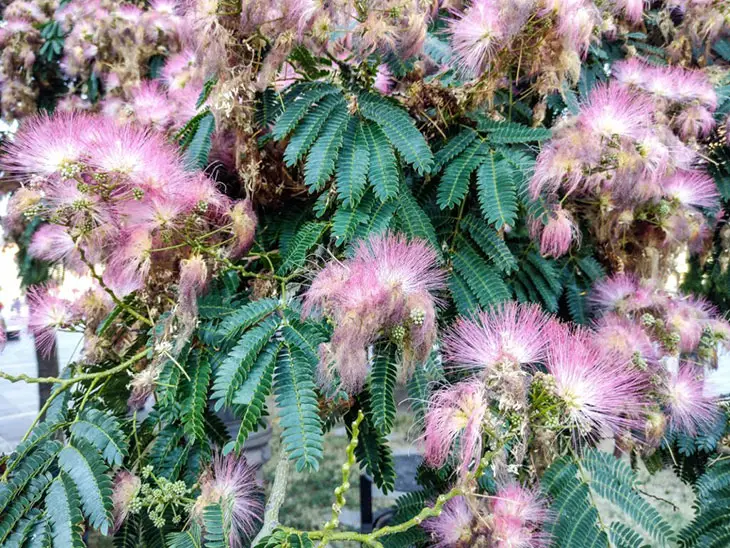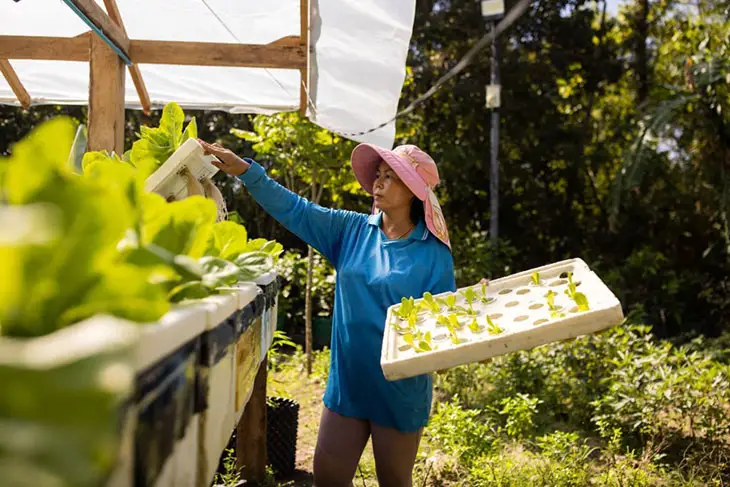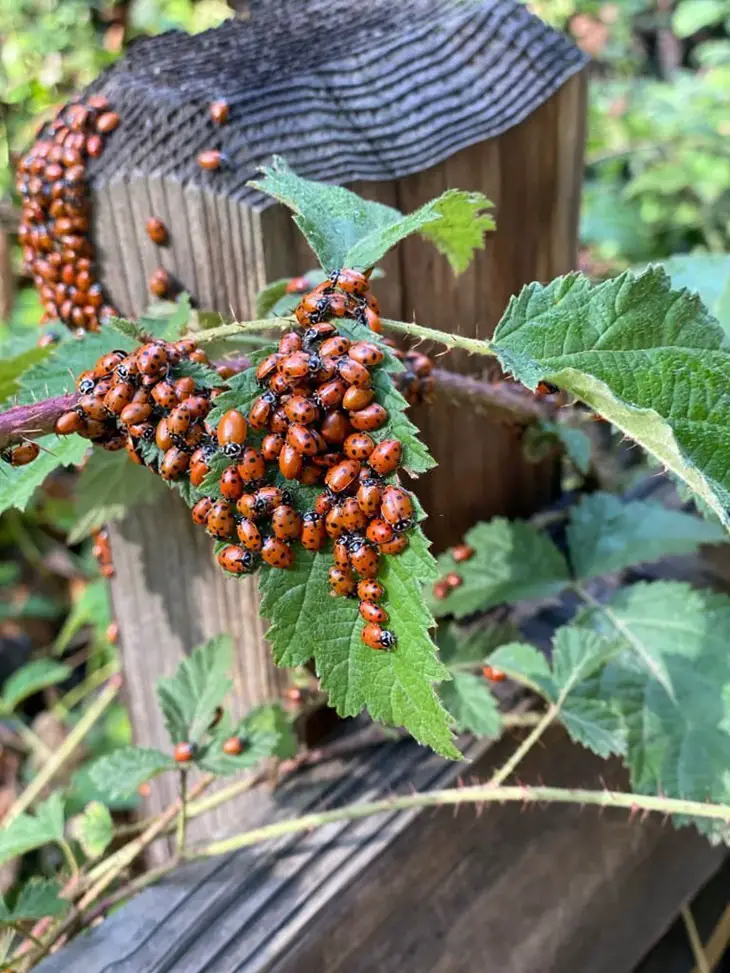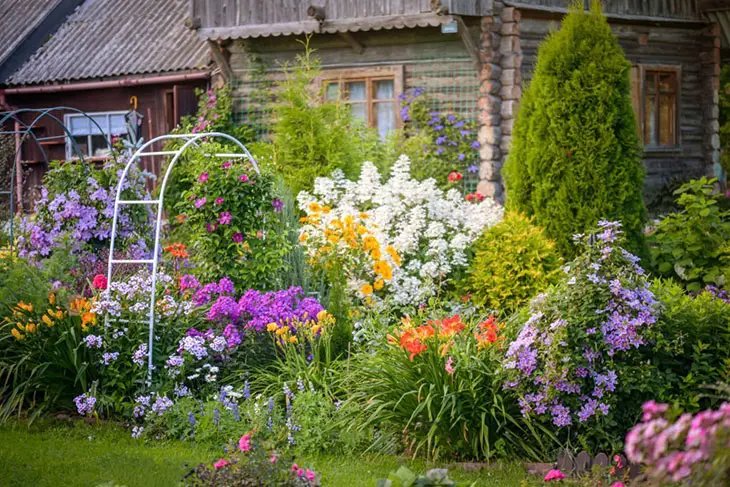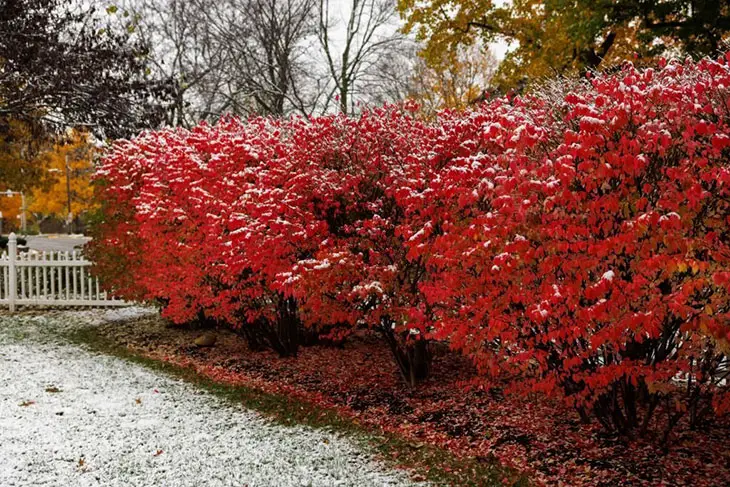
How fast do burning bushes grow? Looking to add a touch of fiery beauty to your yard? The burning bush plant is an excellent choice.
Proper care is essential for keeping it lush and radiant. The burning bush growth rate also depends on living conditions and care.
When it comes to planting burning bushes, location is key. These attractive shrubs thrive in well-draining soil and prefer a spot with full sun to partial shade.
Find out other notices about these interesting shrubs in this article.
What Is a Burning Bush Zone?
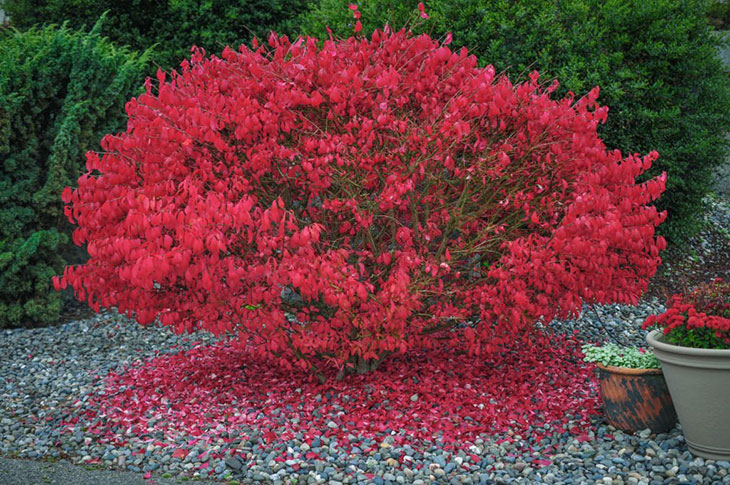
The burning bush is a popular deciduous shrub in North American landscaping. However, it has become too widespread in some other places.
The entire shrub has dense green foliage that turns bright red in autumn, giving it its name.
They do not look very attractive in late spring as the plants have small yellow-green flowers. This shrub is from Asia and has spread to North America. The plant hardiness zones are 4 to 8 (USDA).
You should be careful when using the plants so that it does not spread outside the garden. Burning bushes are a very invasive species.
People usually plant the burning bush in the fall or spring from a container-grown nursery plant. It grows slowly, about one foot per year. If you take care of it, it can live for several decades.
How Fast Do Burning Bushes Grow?
Burning bushes are known for their fast growth and are estimated to add 4 to 12 inches of new growth per year once established.
The growth rate may vary based on soil type and quality, climate, and pruning practices. With diligent care, the growth rate of burning bush can be maximized up to two feet (24 inches) annually.
Besides, the mature plant size also varies, depending on the variety and growing conditions.
For example, the Dwarf Burning Bush plant type is a smaller and more compact variety of the regular-size burning bush. It can reach 6 to 8 feet in height and width of 8 to 10 feet.
Another variety, the dwarf burning bush growth rate, can be up to a height of 5 to 6 feet and a width of 6 to 8 feet. The standard-size burning bush can reach up to 15 feet tall and 10 feet wide in optimal conditions.
What Are The Steps For Planting a Burning Bush in?
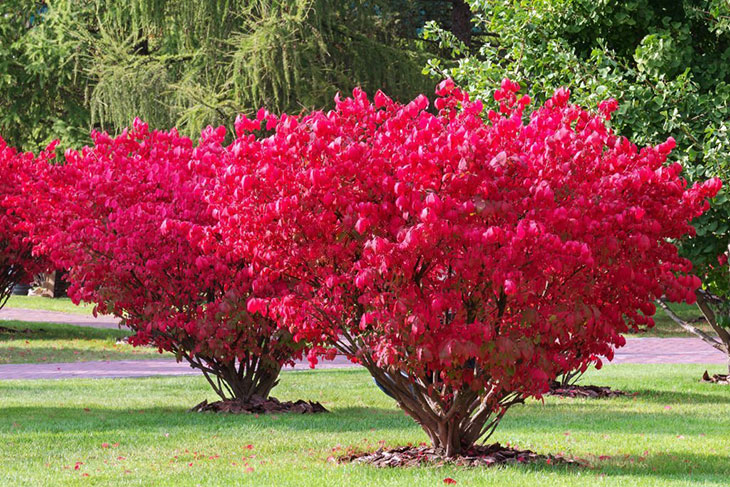
If you want to add this beautiful shrub to your garden, knowing the right steps for planting it is important. It will make the growth rate faster.
Planting a burning bush is a straightforward process that requires some preparation. However, it can be done with basic gardening tools.
Step 1: To initiate, begin digging the planting hole. You need to make sure that it is wider than the root ball. The hole should be precisely two to three times wider; however, not in a deeper position.
After digging, place the soil removed from the hole on a tarp, in a wheelbarrow, or around the perimeter.
Step 2: If your planting area features poor soils or is made up of dense clay, you may need to modify it for optimal growth.
Simply mix in some bagged sand, topsoil, or planting mix with the soil you’ve removed from the hole.
When the soil is very sandy, mix in peat moss, topsoil, or compost to help retain moisture. Suppose your soil is already well-drained and has average fertility; you don’t need to amend it.
Step 3: Remove your Burning Bush from its container. First, press the sides of the container to loosen the root ball.
Then, grip the plant’s base and gently lift the root ball out of the container. Use a utility knife or snipping tool in case it’s hard to remove.
Once removed, gently loosen any feeder roots near the surface. Wash the root ball’s sides and bottom with a garden hose when the roots are firmly bound. It will be easier to free them.
Step 4: When planting your Burning Bush, ensure the root ball top edges sits at or above ground level in the planting hole. Provide backfilling soil mixture to the hole’s bottom if needed.
Step 5: Once you put the Burning Bush in the hole, hold it straight with one hand. Use the other hand to fill the hole with soil.
Gently pack the soil to prevent air pockets. After filling halfway, water the soil before continuing to fill up to the root ball. Don’t add soil on top of the root ball to not suffocate the plant.
Step 6: When planting in a remote area with well-drained soil, make a catch basin using leftover soil to hold water.
This ring-shaped basin gathers water from irrigation and rainfall, reducing the demand for manual watering. You can remove the basin after a year or when the plant is set.
Step 7: Deeply pour water into the growing area and the root ball. The water level should be the same as the root ball’s height.
To help your plant develop strong roots, apply root stimulator solutions. It helps decrease transplant shock and improves healthier plant growth.
Step 8: To keep the soil moist and prevent weed growth, put 1 to 2 inches of mulch (coconut mulch or pine straw) around the plants.
The mulch will speed up the nutrient-absorbing rate and retain water. Don’t cover all the plant’s base with the mulch, as it can rot the bark.
What Are The Steps For Burning Bush Planting In A Container?
The burning bush is a popular plant for its vibrant red foliage. It is an attractive addition to container displays.
Following the steps below is essential for successful vibrancy when you grow the bush in a container.
Step 1: Add a layer of breathable landscape fabric or shade cloth at the bottom to prevent soil from clogging the drain holes. It helps ensure proper drainage and prevents soil from seeping out of the container.
Step 2: To remove a Burning Bush from its container, you can do the same as step 3 above. Grasp the plant’s base and lift the root ball out carefully. If it’s stuck, use a knife or snipping tool.
Step 3: Begin by putting the soil mixture into the bottom. Place the bush in the container and adjust it by removing or adding soil. The root ball’s top edge sits 1/2 to 1″ below the container rim.
Step 4: Fill the area around the root ball using the potting soil. You should press down gently as you go. The soil level should be even with the ball’s top edge.
Step 5: Water the bush until water drains from the holes in the container’s bottom. Put some potting mix in case soil seeps out of the container during watering.
Step 6 (optional): Add mulch as above for decoration or water retention.
What Is The Proper Burning Bush Plant Care?

Growing and maintaining a Burning Bush plant might seem simple enough. However, some key factors must be considered to keep it healthy and looking its best.
Here, we provide helpful tips to ensure its successful growth, including watering, fertilizing, and pruning.
Where To Plant Burning Bush
Choosing the right planting location is essential to ensure the proper growth of your Burning Bush plant. You should think about its soil and lighting preferences.
This plant is adaptable to a wide range of soil conditions. However, it thrives best in soil that is moist, well-drained, and has average fertility.
Conducting a soil drainage test before planting is advisable to ensure proper drainage.
In addition, maintaining a pH level ranging from 6.0 to 7.5 in the soil is recommended. Organic compost and mulch can support the plant to maintain acid soil conditions.
Regarding lighting preferences, Dwarf Burning Bush plants require partial shade or full sun. It will allow the bush to grow optimistically and display vibrant foliage colors.
To promote growth, it is suggested that the plant receives at least five hours of direct sunlight exposure per day.
Thus, you should take the container to a sunny location from spring through fall. If the weather is severe, you can consider growing light for the plant’s best-growing environment.
Best Time To Plant A Burning Bush
Fall and spring are the best times to plant this colorful shrub. Fall planting is optimal because the warm soil temperatures promote root growth.
The cooler air temperatures result in less water loss from the plant. It is important to ensure that the soil is well-drained.
The root ball should be deep soaked immediately after planting to a depth equal to the root ball’s height.
When watering a Burning Bush, you’d better water only as needed to keep the moisture in the root ball and surrounding soil.
However, avoid over-watering to prevent root rot and other deadly plant diseases. New shrubs require daily watering until their roots are established.
After that, only established Burning Bush that experiences a long-time drought will require additional irrigation.
Environment For Planting Burning Bushes
Choosing a site with well-drained soil and full to partial sun exposure is important. Plus, a slightly acidic to moderately Alkaline soil is preferable.
Regular fertilization will help promote the growth of healthy and vibrant foliage. You should use a slow-release fertilizer.
Using a fertilizer with equal phosphorus, nitrogen, and potassium (NPK fertilizer) will help promote healthy growth.
It is important to fertilize at the beginning of the growing season and in the mid or late summer. However, you should not fertilize during winter when the plant is dormant.
How To Prune A Burning Bush In Spring?
It is recommended to schedule an initial session in late winter or early spring. In spring, pruning a burning bush can help promote new growth and maintain the vigorous plant’s shape.
There are several techniques to consider. One way is to use pruning shears to thin out old or dying branches. You can remove up to a third of them to keep growth manageable.
Another approach is to use hedge clippers to shear multiple bushes growing together into a traditional hedge.
It is good to remember that the top needs to be slightly narrower than the bottom. It allows light to penetrate all of the branches.
Rejuvenation pruning can also be used to encourage new growth. It can be accomplished by severely pruning the bush back to within 6 to 12 inches from the ground. This method should only be used if the plant is in good health.
Frequently Asked Questions
When Is The Best Time For Pruning Burning Bush?
Late winter or early spring is the best time for pruning a Burning Bush. It will help improve new growth and keep the plant’s shape.
Plus, the climate conditions at these times are quite mild. After pruning, the plant cannot withstand severe weather.
Do Burning Bushes Need Full Sun?
Yes. Burning bushes flourish in full sun. It needs at least 6 hours of direct and unfiltered sunlight per day. However, they can also grow in partial shade.
How Long Do Burning Bushes Live?
Burning bushes can live for several decades if they are properly maintained. They typically grow moderately, adding about a foot of growth per year.
With proper care and pruning, burning bushes can provide bursts of brilliant red-orange fall color for many years.
Conclusion
How fast do burning bushes grow? It is about a foot for a year. However, it can grow more quickly with proper care.
Burning bushes are beautiful, hardy plants that can provide amazing color for many years. Homeowners can enjoy these attractive bushes by properly planting, care, and pruning.
